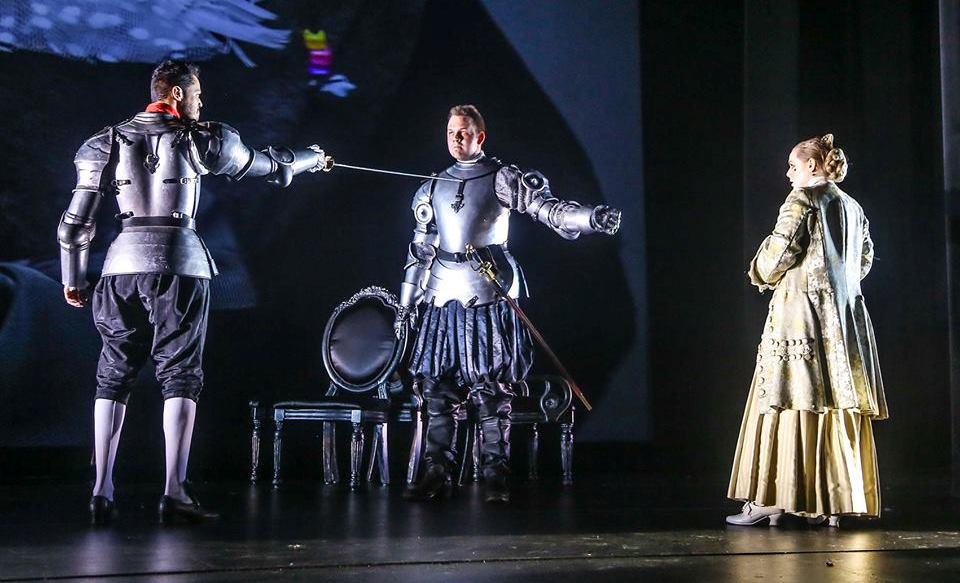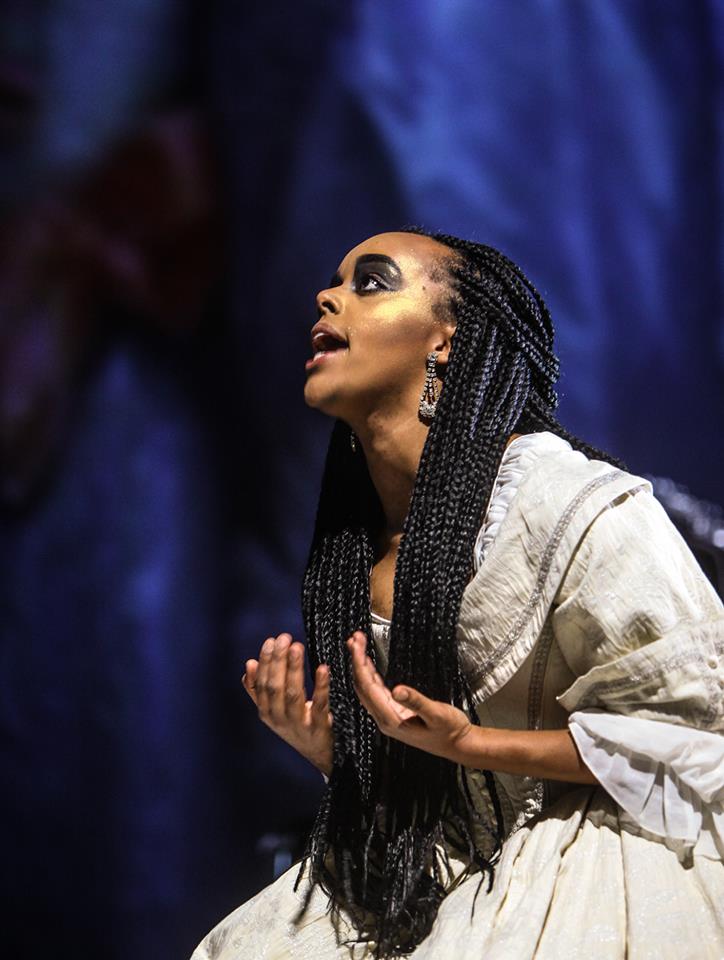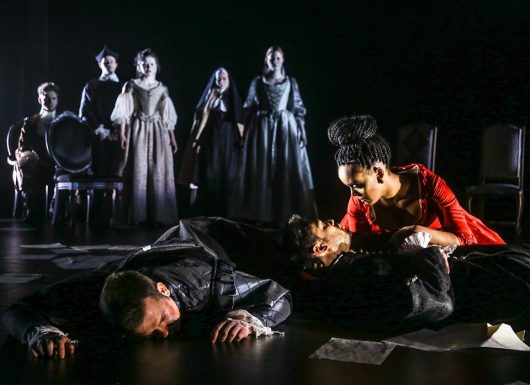REVIEW: All For Love one for all!
Posted on February 8, 2019 By Colin MacLean Entertainment, Front Slider, Theatre
 At the beginning of John Dryden’s All For Love a group of 10 jovial players come out and chide us gently.
At the beginning of John Dryden’s All For Love a group of 10 jovial players come out and chide us gently.
“What a flock of critics are gathered today,” they chuckle. “We are here to tell a tale that has oft been told … a wife and mistress, both of which are too good for you.”
You don’t hear much of John Dryden nowadays outside the world of academe. But at one time (319 odd years ago), he was the rock star of English literature. He was the dominant figure of literary life in Restoration England. He wrote satires, religious tomes, fables, epigrams, plays and established the “heroic couplet” as the standard of English literary expression.
 Dryden based his tale on Shakespeare’s play, but his game was to reinvigorate classic drama. He was one of the first writers to support himself by his writing and, like any rock star, created works that would appeal to large audiences. As a result, he used his tale of the clandestine love of Antony and Cleopatra as a form for philosophical debate on the manners, morals and political attitudes of the time. As time went on, Dryden’s impersonal distance from his characters eventually lost audiences who were looking for a more romantic entanglement.
Dryden based his tale on Shakespeare’s play, but his game was to reinvigorate classic drama. He was one of the first writers to support himself by his writing and, like any rock star, created works that would appeal to large audiences. As a result, he used his tale of the clandestine love of Antony and Cleopatra as a form for philosophical debate on the manners, morals and political attitudes of the time. As time went on, Dryden’s impersonal distance from his characters eventually lost audiences who were looking for a more romantic entanglement.
However, if anyone in Canada could render Dryden palatable to present day audiences it is probably Peter Hinton. He is a god of Canadian theatre, having worked with many companies from the Canadian Stage to Stratford. Hinton is the 2019 Mary Mooney Distinguished Visiting Artist at the U of A – and directs the current Studio Theatre production of All for Love at the Timms Centre for the Arts until Feb. 16.
The director has brought us a superb reintroduction to Dryden and a celebration of language. In fact, one is struck at how his cast of young people have mastered the ability to clearly and intelligently express themselves in Dryden’s words, as well as control the dark, seething passions of the play.
We first meet Antony (Diego Stredel) at a “low water mark” in his life. His romance with Cleopatra (Helen Belay) has fallen apart. His troops still love him but refuse to go into battle to fight for that “Egyptian woman.” He is berated by his friend Ventidius (Griffin Cork – in a stand-out performance), a rude soldier described as “a blunt, unthinking instrument of death,” but who loves his commander.” Once Antony was “the meteor of the world” and now… “she’s unmade him. He became a woman’s toy.” Cleo shows up and he’s smitten all over again. “We have loved each other to mutual ruin,” he comments. The Queen of Egypt is a spitfire – a woman that mighty armies might very well go to battle for. Belay, dressed in dazzling white, dark skinned with black hair flowing over her shoulders and the black eye shadow we see in Egyptian tombs (and old Elizabeth Taylor posters) is an impressive sight and a powerful actor.
 After a few minutes of bliss, the two are thrust apart again. Mostly because of Antony’s waffling. Stredel is certainly a handsome fellow – tall with a closely-cropped beard – but you may find the character a little hard to take. He is jealous, vindictive, changeable, easily manipulated, quick to anger, has the discipline of a weather vane and keeps abandoning poor old Cleo for, well, for his wife, Octavia (Marguerite Lawler – in a well calibrated, intelligent reading.) Actually, not Octavia per se, but his loyalty to Rome. Antony makes Hamlet look like General Patton. You probably know where all this is leading – a stage filled with bodies, lethal knives and one really pissed off snake.
After a few minutes of bliss, the two are thrust apart again. Mostly because of Antony’s waffling. Stredel is certainly a handsome fellow – tall with a closely-cropped beard – but you may find the character a little hard to take. He is jealous, vindictive, changeable, easily manipulated, quick to anger, has the discipline of a weather vane and keeps abandoning poor old Cleo for, well, for his wife, Octavia (Marguerite Lawler – in a well calibrated, intelligent reading.) Actually, not Octavia per se, but his loyalty to Rome. Antony makes Hamlet look like General Patton. You probably know where all this is leading – a stage filled with bodies, lethal knives and one really pissed off snake.
Hinton stages his play in a stately, almost religious manner. His actors keep moving around the stage – engaging each other or merely watching – as deliberate and quite lovely patterns form. Once in a while they pause and break into a chant that could have been written by Pope Gregory himself. It works well since the play is written at such a high emotional level. The deliberate, dramatic movement and song vary the pace while maintaining interest. The whole production is voluptuous and sumptuous. Huge backdrops of classic paintings of the time dominate the back of the stage. The costumes are extravagant and gorgeous (set, costumes and lighting by Sofia Lukie). The lighting is interesting as characters move in and out of pools of light. The furnishings are ornate. In the distance half-heard voices drift in and out, adding to the impression of a dream.
The play is long and talky and must be given some slack in an age where events happen very quickly on stage. At nearly three hours (with intermission) the audience may cop to a small sense of relief when the bodies begin to pile up.
This is an evening worth seeing, not only for Hinton’s theatricality and the fine performances of the cast, but for the kind of experience that you don’t find very often on today’s stages.
Photos by Ed Ellis












